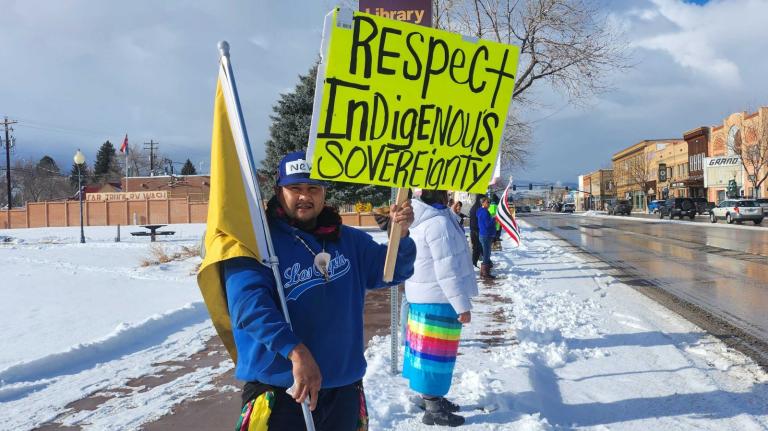This may seem hokey, but I’m so far beyond frustrated with the legislators of this country that I’ve gone and written my own piece of climate change legislation.
My bill is simple. Once you get past all the “whereas” and so forth, it simply calls for the United States to aim toward stabilizing atmospheric carbon dioxide concentrations at 350 ppm and to lead international negotiations on the successor to the Kyoto Protocol toward the same goal (you can read the full language here).
This follows the lead of Hansen’s findings and Bill McKibben’s 350 campaign.
The bill, as I’ve written it, is a “sense of the House” resolution. It would have no force of law (and it couldn’t be vetoed). But at the same time, if it were taken up and passed by the House of Representatives, it would declare to the world (and to our own citizens) that we intend to do what we have to do — as Betsy Taylor of 1Sky so often says, “what is scientifically necessary rather than what is politically possible.”
I’m discussing the bill with the staff of my Congressman Jerrold Nadler, and I hope he’ll take it further.
There is no talk of cap-and-trade or cap-and-dividend or investment in tech or green jobs or anything else in my bill. It is not 432 pages long. It is 2 pages long. It does nothing but declare that “We, the People” want to aim at 350. There is no methodology or anything else to argue over. An up or down vote on this bill, if it made it to the House floor, would simply answer the question: Do we want to do what’s necessary?
The way I see it, a bill this simple and free of distractions could act as a kind of Bill of Rights for climate change, a basic text against which all other more detailed legislation must be measured. Do we, with our hundreds of pages of more complicated legislation, achieve 350, or not?
In other words, the 350 bill provides a true North toward which later legislation must point.
I’m not trying to undermine Markey’s iCAP, or other citizen’s bills that organizations like 1Sky might introduce. I support iCAP and I’m sure I would support anything 1Sky did. But while we wait for Markey to get iCAP out of a committee and let 1Sky figure out what the climate movement’s next move should be after last week’s Senate failure, I’m putting this on the table for discussion. And I’m taking friendly amendments and comments.
Lastly, I know there are people who’ll think I’m unrealistic on two counts: first, that a proposal to attempt to stabilize at 350 cannot possibly find political legs, and second, that a bill written by li’l old me (or any other mere citizen) could ever pass.
On the first count, listen: Climate change ranks about tenth in voter concerns, true. But the League of Conservation Voters did a study that showed that, of 3,302 questions asked of the Presidential candidates by Sunday morning talk-show hosts, only eight of those questions centered on global warming (that’s 0.2 percent, by the way). I wonder how high on the agenda global warming would go if the press actually covered it? I believe there is more potential political will out there to do what’s necessary than we suspect.
But we need some real leadership. And we need some citizen action, some citizen activism, maybe even some citizen-written legislation. Because for my money, the politicians are taking too long.
On the second count: The way I see it, geez, it can’t do any worse than a bill written by, say, Senators Boxer, Warner, or Lieberman, right?
PS: Here is the the resolution part of the bill (again, you can read the full bill here):
Resolved, that it is the sense of the House of Representatives that:
- United States and international climate change policy must aim to begin within ten years to stabilize atmospheric concentration of carbon dioxide at no more than 350 PPM or better;
- Policy frameworks must be flexible enough to adjust should advancing science suggest a change in the 350 PPM compass point; and
- The United States must lead the international community towards substantive action on the goal of 350 PPM atmospheric carbon dioxide within ten years in the current UN Framework Convention on Climate Change negotiations.

